News and Blog
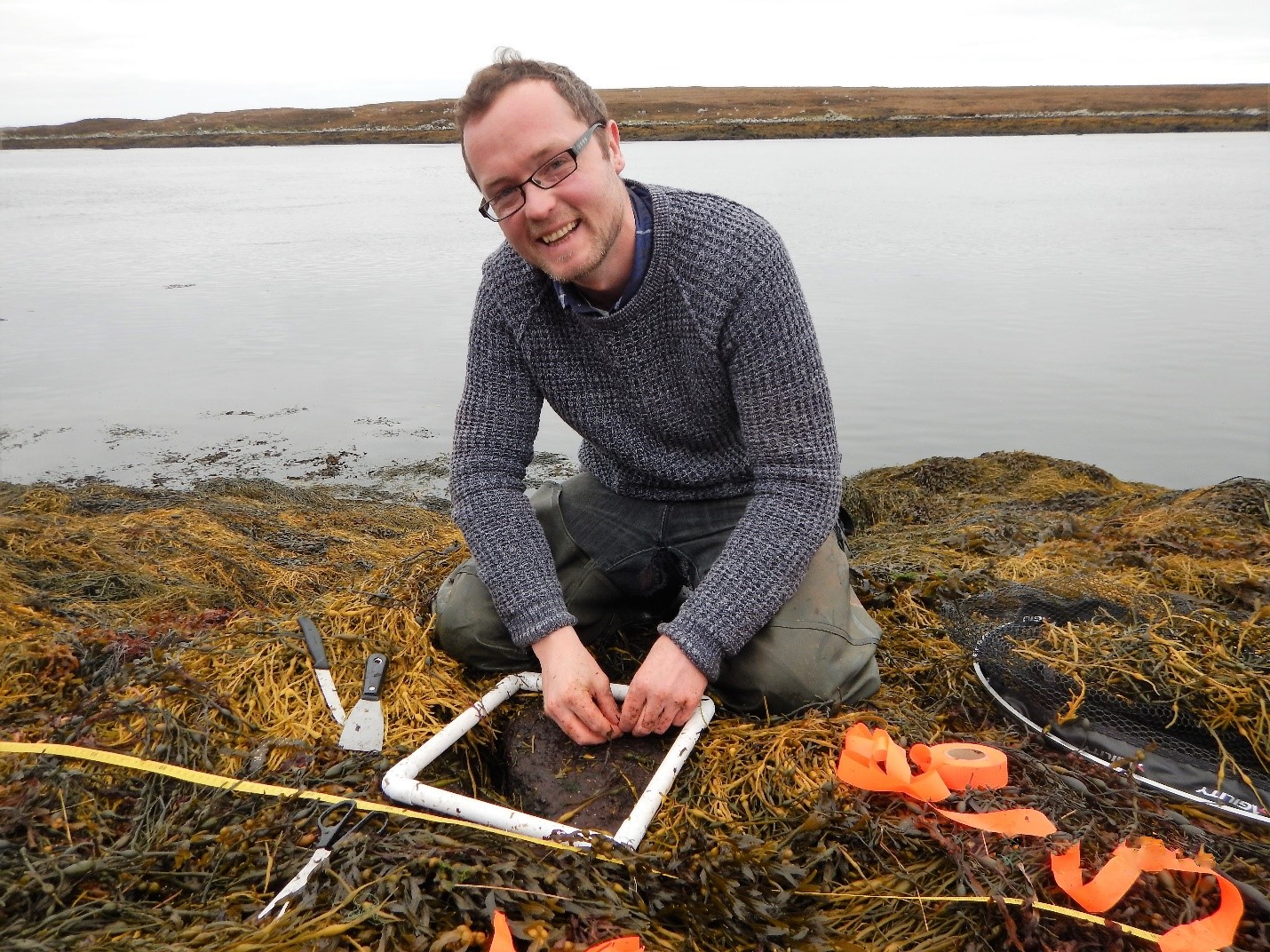
The Ebb and Flow of Resource Science Assessments
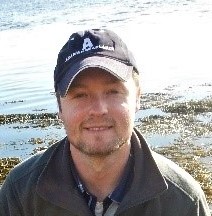 The author, Michéal MacMonagail, is Arramara Teo’s Resource Scientist in Ireland.
The author, Michéal MacMonagail, is Arramara Teo’s Resource Scientist in Ireland.
I recently recalled a good week of seaweed sampling we had in August of last year and thought I’d share the experience with you. I remember we needed to inspect several beds of Ascophyllum nodosum along the Connemara and Mayo coastlines. We try and visit as many sites along the west of Ireland as we can in a season, which runs from May until October. It’s challenging and can take a fair bit of time, but it’s often really enjoyable and very rewarding work.
Sunday
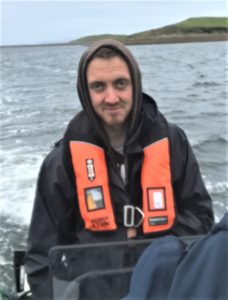 The night before one of our sampling trips, Gary Dundass (right), our Resource Science Technician, and I met to plan the week ahead. As is our custom, we check our maps and pack the tools we need to do our job: devices for measuring seaweed, measuring tapes, notepads, weighing scales and our trusty 5-for-a-euro knives. In the morning we will collect the fuel for our boat. We planned to spend the following day sampling Ascophyllum in Bertraghboy Bay on the west coast of Ireland, in beautiful Connemara. All in all, we thought, if the weather is with us – it could be a good week.
The night before one of our sampling trips, Gary Dundass (right), our Resource Science Technician, and I met to plan the week ahead. As is our custom, we check our maps and pack the tools we need to do our job: devices for measuring seaweed, measuring tapes, notepads, weighing scales and our trusty 5-for-a-euro knives. In the morning we will collect the fuel for our boat. We planned to spend the following day sampling Ascophyllum in Bertraghboy Bay on the west coast of Ireland, in beautiful Connemara. All in all, we thought, if the weather is with us – it could be a good week.
Since it was August, this meant long days of sunshine and plenty of time spent out onshore to get our tasks done. ‘Low tide is at 10:30 am,’ Gary told me. This gives us a window between 7:30 – 1:30 pm to get in the water and visit our sampling sites. It means an early start on these bright summer mornings, but the tide always calls the shots. Gary heads back home, and we rest up for the day ahead.
Monday
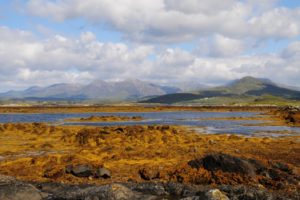 We started the week checking some productive Ascophyllum beds in Roundstone (Cloch na Rón), in the north of the bay. We have been doing this job of inspecting and monitoring Ascophyllum beds for more than five years now, so we have an intimate knowledge of where the most productive beds are located. Gary and I met at the pier just before 7 am and started preparing for the day ahead. We put the boat in the water, put on our waders, gathered our sampling gear and headed off. We spent the first 30 minutes in the water, quietly steaming up to our first of six sampling areas.
We started the week checking some productive Ascophyllum beds in Roundstone (Cloch na Rón), in the north of the bay. We have been doing this job of inspecting and monitoring Ascophyllum beds for more than five years now, so we have an intimate knowledge of where the most productive beds are located. Gary and I met at the pier just before 7 am and started preparing for the day ahead. We put the boat in the water, put on our waders, gathered our sampling gear and headed off. We spent the first 30 minutes in the water, quietly steaming up to our first of six sampling areas.
We arrive at our first sampling spot. Gary lays out a transect while I start to enter GPS info into our ‘all-weather’ note pads. We cut through the hardy weed and take some biometrics (weight, length, presence of any epiphytes, etc.) and note our findings. All in all, it takes us about 40 minutes to complete our first transect. Not bad, but it’s clearly day-1 of a long week. ‘Next one,’ Gary says as he approaches. We pack up and move on to our next area, this time further into the bay. The rest of the day goes like this as we gather our data as the day gets warmer and warmer.
We work until the water starts creeping in around our ankles. We knew then it was time to pack up and leave. Slightly wearily, we arrive back at the pier and get the boat out of the water. We call it a day.
Tuesday & Wednesday
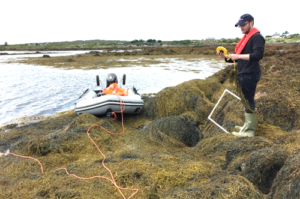 For the next two days, we decided to check out some beds in Killary Harbour, directly on the border between Mayo and Galway. A beautiful spot and one we always enjoy going back to. On Tuesday, we decide to focus on the south shore, and on Wednesday, we will sample the northern shore.
For the next two days, we decided to check out some beds in Killary Harbour, directly on the border between Mayo and Galway. A beautiful spot and one we always enjoy going back to. On Tuesday, we decide to focus on the south shore, and on Wednesday, we will sample the northern shore.
The days start as many of them do. We quietly go about our work, measuring seaweed and noting our findings. As we whizz about the bay (a fjord, actually), we pass big leisure boats, small fishing boats and traditional Currachs, and make our way to the very edge of the bay, right on the coastal tip of Mayo. In this particular bay, we find plenty of Fucus vesiculosus and some Fucus serratus growing between the Ascophyllum fronds. Fucus can easily be distinguished from Asco by its colouring and morphology and is very often found growing near or in beds of Asco. We note the weight of the Fucus fronds and the particular species present and continue with our work. We argue over whether we see Harbour Seals or Grey Seals sunning themselves on a small island. Seals have their pups close by at this time of year so best not to get too close and risk disturbing them. We watch from afar and finish our work for the day.
We find many dense Ascophyllum beds with long fronds. You can age this seaweed pretty well; it forms an air bladder (vesicle) annually. This is really only a rough estimate as the seaweed sheds its fronds. Sometimes the holdfasts (the structure that grips the rock) of two individual plants growing next to one another will coalesce and fuse to form one common holdfast. Pretty extraordinary really. We love to witness the adaptability of our marine environment. Despite the novel attractions, we continue with our work and complete the 6th and final transect of the day before calling it quits.
Thursday
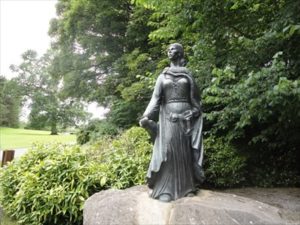 This morning we are once again onshore in Mayo. We are working on Achill Island today, close to the home of the pirate queen Gráinne Ní Mháille (Grace O’Malley). She was the 16th century Queen of Umaill, who is the subject of much folklore and has been immortalized in verse, music, documentaries and an interpretive centre.
This morning we are once again onshore in Mayo. We are working on Achill Island today, close to the home of the pirate queen Gráinne Ní Mháille (Grace O’Malley). She was the 16th century Queen of Umaill, who is the subject of much folklore and has been immortalized in verse, music, documentaries and an interpretive centre.
We get through our first few sampling points without much fuss. We arrive at our final sampling point where I land the boat on shore as Gary jumps out and secures our craft to some rocks with a hitch knot. Gary, who could tie fifty different knots in his sleep, takes two minutes to secure the boat. On this outing, we see many birds, and we speak to some locals, but the majority of our day involved keeping our heads down and getting our tasks completed. We were only able to get halfway through our sampling day before the rain was upon us, and we had to steam back home. On the way home, we head to O’Malley’s Pub for a lunch of steamed mussels and brown bread. As I enjoy the delicious meal, I ponder if they’re the descendants of Gráinne Ní Mháille? Turning my attention to tomorrow, Gary and I make plans to visit our experiment site, and I go to sleep that night hoping for blue skies the following day.
Friday
The day starts off grey and miserable. Today we’re testing out a drone fitted with a new camera that we hope will help us in our work. I am always a little bit anxious before a drone survey, especially when the weather is changeable – as tends to be the case in the west of Ireland. We put the boat in the water and make our way out. We are setting up our drone experiment on Crow Island, in the middle of Cuan Cill Chiaran (Kilkerrin Bay) Bay.
We are going to use the services of Western Aerial Surveys, a local aerial survey company, to help us map the island. We tested out a couple of cameras; a high-resolution RBG camera and a multispectral camera (Parrot). We plan to develop a process and use this technology to help us in our sampling work. We have a lot of shorelines to cover between Galway and Mayo, and a drone could potentially help us cover a lot more ground, more quickly. We’re testing out what the camera can do, try to work out what the flying speeds are, how high we can fly it, and all the other bits and pieces that need to be tested. The weather starts to improve as the sun begins to break through the clouds and the winds begin to die down. Wind speed is 11 km according to the Drone Deploy app. and we’re good to go! We fly for about 45 minutes; with a battery change in between. The new camera is heavier than the RGB; ‘it’s eating the battery charge’ says Gary. Good to know.
Saturday
It’s our final day of sampling for the week. The tide is at 3 pm today in Co. Mayo, ‘the tide is one hour later than in Galway,’ Gary tells me.
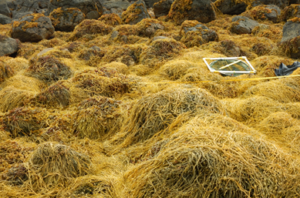 It was a particularly bitter morning for this time of year. Today we are sampling Ascophyllum in Clifden Bay, Galway. It’s a long drive to get to the pier, and our energy levels were on the low side. We launch the boat in the morning chill and slowly steam towards our first sampling site without much being said. It was continually teaming with rain, not enough to call the day off, but enough to get you soaked to the bone before lunch. And that’s just what happened.
It was a particularly bitter morning for this time of year. Today we are sampling Ascophyllum in Clifden Bay, Galway. It’s a long drive to get to the pier, and our energy levels were on the low side. We launch the boat in the morning chill and slowly steam towards our first sampling site without much being said. It was continually teaming with rain, not enough to call the day off, but enough to get you soaked to the bone before lunch. And that’s just what happened.
I will admit we were not in the best of form. I recall how full of energy we were back at the beginning of our season, in early May. Now in late August and after nearly three months of sampling, we needed a rest. But we kept going about our work and measured the seaweed in the south of the bay,
We get to one of our final sampling areas and take our measurements. When we get back to the boat, however, we notice that it is sitting out of the water! We try our best to maneuver it, but the boat is beached. The tide still has a way to go, maybe an hour or so, so we decide to have a look around. We make the most of our time, scrambling in the rocks, looking for scallops, some green crabs make an appearance, as does a heron and a cormorant. You often see these large sea birds on the shore, and they are always a welcomed sight.
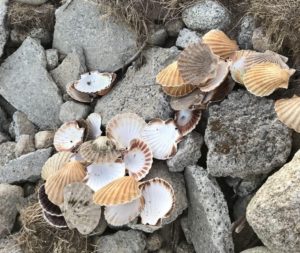 We come across a mound of shucked oyster shells. There were dozens of them and plenty of discarded lemon slices; somebody had a feast.
We come across a mound of shucked oyster shells. There were dozens of them and plenty of discarded lemon slices; somebody had a feast.
We get towards the end of the day, and it’s about 7 pm by the time we are back on land with everything cleaned and packed away.
Back at home, I spend some time entering our week’s data into a spreadsheet. ‘On Monday we go again,’ I think, as I consider what to do with tomorrow’s day off. Sleep most likely.
For more on Arramara’s Resource Science work visit arramara.ie
